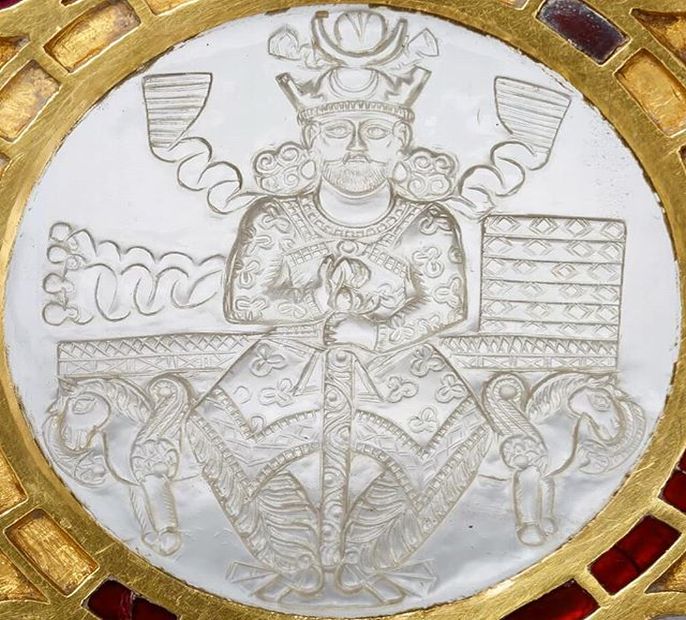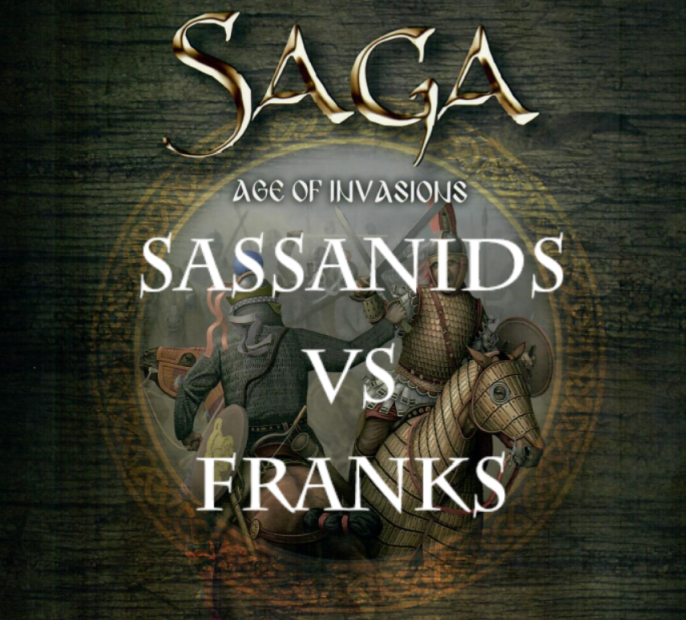A Sassanian Saga Part 1: The Sassanid Empire and its Kings
The Sassanid Empire or Neo-Persian Empire existed from the early third to the mid seventh century A.D. It began with the overthrow of its predecessor, the Parthian Empire and ended when it was conquered by newly Islamic Arabs.
It saw itself as a revival of the Achaemenid Persian Empire and
stretched out from its Iranian heartlands around the Persian Gulf and at its greatest
extent into Egypt and Anatolia, almost to the very gates of Constantinople.
Although it was culturally Iranian and Zoroastrianism was its
state religion, the empire was pluralistic and employed many different peoples
and faiths in its administration and especially its armies. It was ruled by the
Sassan dynasty and the Shahanshah, or King of Kings.
Given that this blog will be primarily concerned with
military history as it relates to playing the Sassanids on the table, I think
it would be interesting to examine the role of the Sassanid kings in matters of
warfare in greater detail.
According to Procopius, leading armies into battles was one
of the king’s most important roles and he adds that it was “a given” that they
would take command of at least a part of the army personally.
The presence of their king seems to have had a big effect on
their troops’ discipline and fighting spirit at critical parts of the battles
and especially during sieges. Both Kavad I and Husrav I led their troops during
the sieges of Amida and Antiochia respectively, with the former being reported as
driving his men forward with sword in hand.
However, as Börm notes, although Sassanid kings could sometimes
be found in the thick of the action, it was rare for them to personally engage
in combat since the loss of the Shahanshah would have catastrophic effects for
both the battle and the empire.
Rather more often they would set up on an elevated position
from where they could direct their troops and were in clear view to inspire them.
(Another aspect in which the Sassanid mirrored the Achaemenid empire, given
that Xerxes employed the same tactic at Salamis,)
A question which many of you will be asking yourselves at this point is why the Sassanid kings were this involved with matters of war, given the danger and the inconvenience living on the march.
The reasons for this are both political and ideological. Firstly,
Zoroastrianism, the Sassanid Empire´s predominant religion, demanded that its
kings “fight to defend faith and empire” and secondly, being victorious in
battle was an important part of the so called xvarrah, a sort of fateful,
almost mystical “kingly aura” that was said to be the mark of the rightful ruler.
Failing to live up to these ideals therefore threatened a king’s legitimacy and played into the hands of potential usurpers. This is nicely illustrated by Husrav I´s campaign against the Romans in the 540s, the main purpose of which was to win a great victory and accrue glory as the king was fearing a coup d´etat by his militarily successful brother Zamas.
This tendency for the king to directly command their troops seems to have waned over time and Roman sources even mention a royal decree that forbid the Shahanshah from partaking in battle unless the opposing commander was also a ruler. The historian Michael Whitby theorizes that this law could have been instated by Husrav I after Sassanid forces were attacked by Roman forces during a river crossing near Melitene and the king was almost killed or captured.
However, both this theory and the decree itself are controversial, as it is only mentioned in Roman sources, never in Sassanid Persian literature.
I hope that you have enjoyed this brief look into the role of the king of kings and learned some titbits to drop at your next gamenight.
Happy hobbying!
Undoubtable is however that the Persian kings of the late empire did not engage in battle the way their predecessors had and in the last war between Romans and Sassanids (602/3-630) Shahanshah Husrav II never personally took the field.

.png)

Comments
Post a Comment